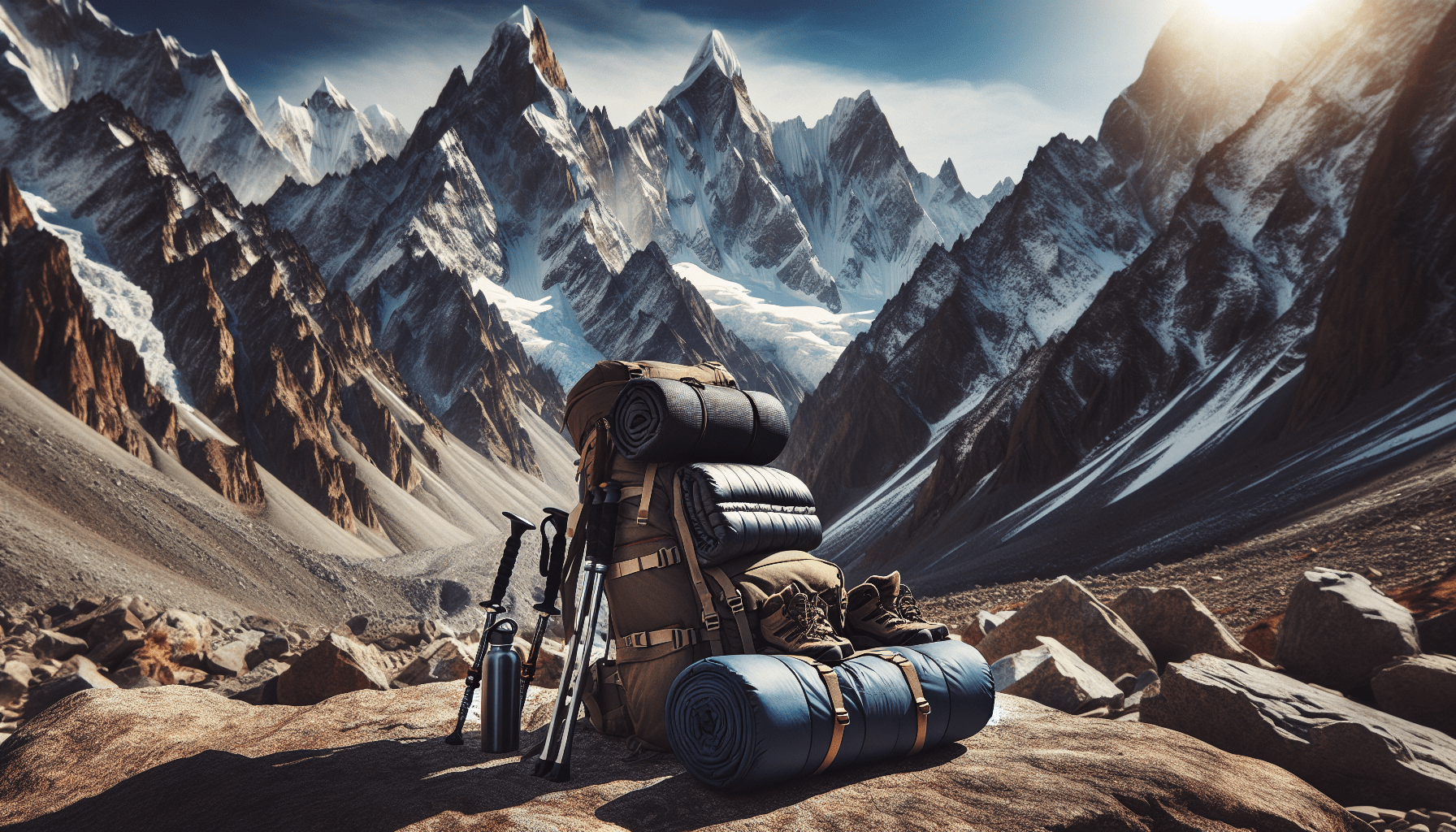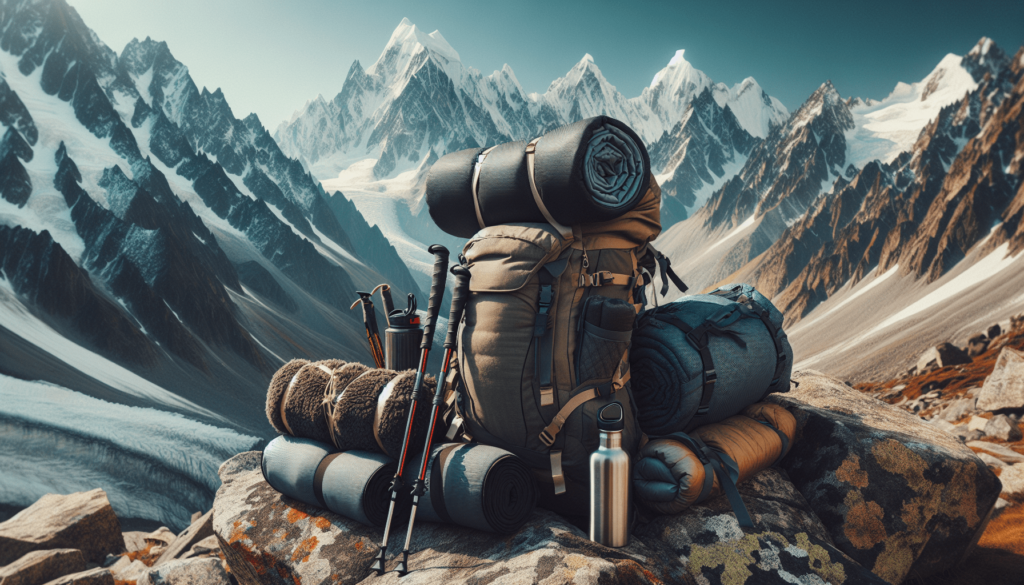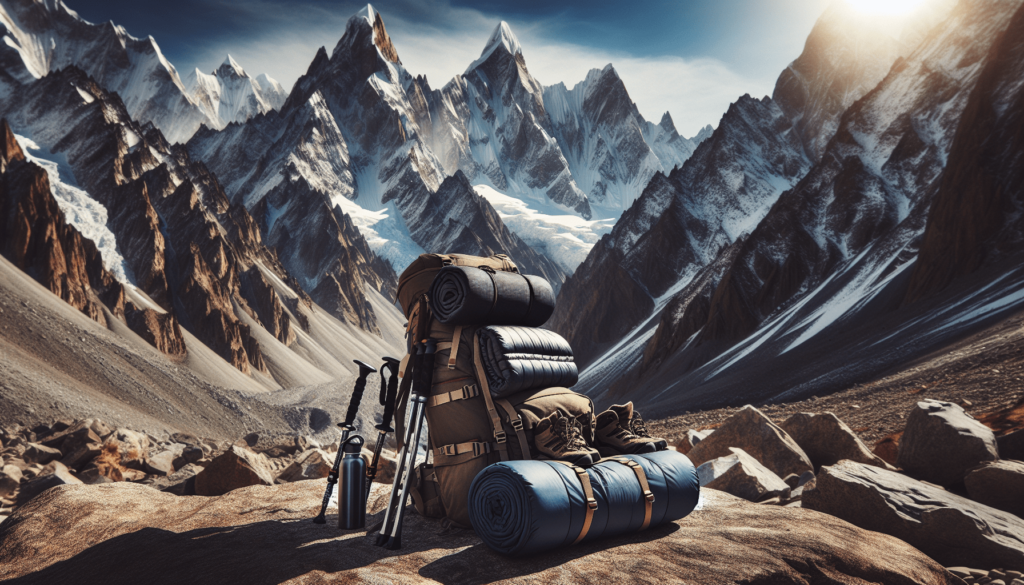
In our article “Tips for Camping in High Altitude Locations,” we explore essential strategies for making the most of our adventure in mountainous regions. We’ll dive into key insights about acclimatizing to thinner air, choosing the right gear to keep us warm and safe, and understanding the unique challenges posed by high altitudes. Whether we’re seasoned campers or new to the mountains, these practical tips will help ensure our trip is both enjoyable and memorable. Let’s embark on this high-altitude journey together and uncover the secrets to camping success in the clouds. Have you ever wondered what it’s like to camp in the clouds? High altitude camping offers a unique and breathtaking experience, but it comes with its own set of challenges. Whether you’re new to high-altitude areas or a seasoned adventurer, preparation is key. In this article, we’ll share tips and essential information to make your high-altitude camping trip safe and enjoyable.

Why High Altitude Camping?
High altitude camping gives us the chance to explore some of the most stunning landscapes that nature has to offer. From majestic mountain peaks to serene alpine meadows, these areas provide a truly enriching outdoor experience. However, the reduced oxygen levels and unpredictable weather conditions make these locations distinct from other camping zones. Hence, understanding the particularities of high altitude camping will arm us with the necessary techniques and knowledge to conquer the altitudes safely.
The Appeal of High Altitude Locations
High altitude locations often boast incredible views, diverse ecosystems, and a sense of solitude that’s hard to find at lower elevations. Whether you’re a hiker, a nature enthusiast, or someone looking to escape the hustle and bustle of daily life, high altitude camping can offer a refreshing respite. The serenity and beauty of these landscapes make them well worth the extra effort required for camping at higher elevations.
Understanding High Altitude
Before diving into tips and tricks, it’s crucial to understand what high altitude entails. Generally, high altitude is considered to be between 8,000 to 12,000 feet above sea level, while very high altitude ranges from 12,000 to 18,000 feet. Extreme altitude is anything above 18,000 feet. Each category poses unique challenges and risks that we need to be aware of.
Physical Effects of High Altitude
At higher elevations, the air pressure decreases, which makes it harder for our bodies to get the oxygen we need. This can lead to altitude sickness, also known as acute mountain sickness (AMS). Symptoms include headaches, dizziness, shortness of breath, and fatigue. In more severe cases, high-altitude pulmonary edema (HAPE) or high-altitude cerebral edema (HACE) can occur, both of which are life-threatening conditions requiring immediate medical attention.
Climate and Weather Conditions
The weather at high altitudes can be quite unpredictable. One minute it could be sunny and warm, and the next could bring snow or freezing rain. Temperature fluctuations throughout the day are common, sometimes dropping dramatically at night. Therefore, it’s essential to be prepared for a range of weather conditions.
Preparations Before the Trip
Preparation is the cornerstone of a successful high-altitude camping trip. Advanced planning can mitigate many of the risks associated with high altitudes. From building endurance to packing the right gear, every step we take beforehand makes our adventure more enjoyable and safe.
Physical Conditioning
To handle the demands of high-altitude camping, it is advisable to be in good physical condition. Cardiovascular exercises like running, swimming, and cycling can improve our stamina and lung capacity. Strength training can also help us manage the physical burdens of carrying equipment and hiking uphill.
Acclimatization
One of the best ways to prevent altitude sickness is to allow our bodies time to adjust to the decreased oxygen levels. When possible, arrive at a mid-level altitude a few days before our planned camping trip to acclimate. Gradually ascend to higher altitudes, limiting our elevation gain to approximately 1,000 feet per day once we get above 8,000 feet. Taking rest days can also be beneficial.
Essential Gear
Equipping ourselves with the right gear is a critical part of preparation. Here’s a table outlining some must-have items for high-altitude camping:
| Gear | Purpose |
|---|---|
| High-quality tent | Protection against wind, cold, and precipitation |
| Sleeping bag | Insulation suitable for freezing temperatures |
| Sleeping pad | Additional insulation from the cold ground |
| Hydration system | Hydration packs or bottles to maintain fluid levels |
| Nutrition supplies | High-energy, non-perishable food items |
| Layered clothing | Efficient regulation of body temperature |
| Cooking equipment | Fuel-efficient stove and cookware |
| Navigation tools | Maps, compass, GPS devices for uncharted territories |
| First aid kit | Basic medical supplies |
| Sun protection | Sunglasses, sunscreen, lip balm (high UV levels) |
| Headlamp | Hands-free lighting for dark conditions |
Research
Researching the specific high-altitude location we plan to visit is crucial. Each area has its unique characteristics, weather patterns, and wildlife. Studying these aspects helps us prepare better and avoid potential pitfalls. Reading reviews, checking weather forecasts, and understanding the local regulations can also make our trip smoother.
Tips for the Trip
Once we have prepared ourselves physically and mentally, and gathered all the necessary gear, it’s time to focus on specific tips that can help us during the actual camping trip. These tips are crafted from experienced high-altitude campers and will help us handle various challenges that may arise.
Hydrate, Hydrate, Hydrate
Staying hydrated is essential at high altitudes due to faster dehydration from the thin, dry air. Aim to drink at least 3-4 liters of water daily. Remember, by the time we feel thirsty, we might already be dehydrated. Incorporate electrolyte-rich drinks to maintain balance.
Eat Wisely
Eating properly can help us maintain energy levels, which is vital for physical performance at high altitude. Our appetite might decrease, but consuming high-calorie, easily digestible food can keep our energy up. Incorporate carbs and fats into our meals as they offer sustained energy release.
Dress in Layers
Layering our clothing allows us to adjust to the varying temperatures we’ll experience throughout the day. A good layering system includes a base layer to wick moisture, an insulating layer to retain body heat, and an outer layer to shield us from wind and moisture. Always opt for moisture-wicking, quick-dry fabrics.
Monitor Weather Conditions
Keeping an eye on the weather is pivotal. High altitude weather can change quickly. A portable weather radio or checking weather apps periodically can keep us updated. Always have a contingency plan should severe weather occur.
Set Up Camp Smartly
Choosing the right location to set up our tent can impact our camping experience significantly. Seek flat ground, preferably shielded from the wind, and away from potential hazards like falling rocks or flash flood areas. Firmly anchor our tent, considering the potential for strong winds.
Take It Slow
Pacing ourselves, particularly when hiking to higher elevations, is important to avoid overexertion. Plan our day with sufficient time for breaks and rest. Listen to our bodies – if we feel dizzy or unusually fatigued, it’s better to rest than push onward.

Safety Considerations
While high altitude camping can be thrilling, safety must remain our top priority. Recognizing potential risks and having plans in place to handle emergencies can make the difference between a memorable trip and a hazardous one.
Recognize Altitude Sickness
Knowing the symptoms of altitude sickness is the first step in prevention and treatment. Mild symptoms can often be managed by descending to a lower altitude and resting. More severe symptoms, such as confusion, loss of coordination, or chest tightness, may require immediate descent and medical intervention.
Emergency Communication
It’s prudent to have a reliable mode of communication for emergencies. A satellite phone or a personal locator beacon (PLB) can function where cell signals may fail. Share our itinerary with someone trustworthy and check in regularly.
Wildlife Awareness
High-altitude regions often have unique wildlife. While encounters may be rare, it’s crucial to know what animals inhabit the area and how to act if we encounter them. Storing food properly and maintaining a clean campsite can deter visits from curious animals.
Environmental Considerations
Camping in high altitudes means we’re stepping into delicate ecosystems. Being mindful of our environmental impact ensures these beautiful locations remain pristine for future campers.
Leave No Trace
Adhering to Leave No Trace principles is fundamental. This means packing out all our trash, minimizing campfire impacts, respecting wildlife, and staying on designated trails. Our goal should be to leave the campsite as we found it, if not better.
Water Sources
Freshwater sources can be limited in high altitudes. We must ensure any water we use is treated or filtered to avoid illnesses. Also, be cognizant of our water usage and strive to minimize wastage to preserve these sources for others and the local wildlife.
Minimal Impact Camping
Practices such as using existing fire rings, camping on durable surfaces, and avoiding shortcut trails help preserve the natural environment. Small efforts like carrying a trowel for proper waste disposal can significantly reduce our impact on these fragile ecosystems.
Gear Maintenance and Selection
High altitude camping gear tends to take a beating due to the harsh conditions. Choosing durable, high-quality equipment and maintaining it properly can extend its life and ensure our safety while out in the wilderness.
Selecting Quality Gear
Investing in reputed, high-quality gear designed for high-altitude conditions is advisable. Look for products that have been tried and tested by other high-altitude campers. Check product reviews, ratings, and consider consulting with specialty outdoor stores.
Maintenance Tips
Regularly inspect our gear for any signs of wear and tear. Repair any minor damages immediately to prevent them from escalating. Items like tents, sleeping bags, and jackets should be cleaned and stored properly after each trip to extend their lifespan.
Mental Preparation
While physical preparation is essential, mental readiness is equally crucial. High altitude camping can be mentally taxing, but increasing our mental resilience can make the experience rewarding.
Stay Positive
A positive mindset can help us overcome many of the challenges we might face. Having confidence in our preparation and being ready to tackle unforeseen issues with a clear mind can dramatically improve our experience.
Know Your Limits
Understanding and respecting our limits is part of our mental preparation. It’s tempting to push ourselves to achieve more, but it’s crucial to know when to pull back. Listening to our bodies and making cautious decisions can ensure our safety.
Post-Trip Considerations
After a high-altitude camping trip, there are several things we should do to ensure we’re ready for the next adventure and to reflect meaningfully on our experience.
Equipment Check
Once we’re home, give our gear a thorough inspection. Clean and repair any items as necessary and store everything correctly. This ensures our gear is in prime condition for our next adventure.
Health Check
Pay attention to our bodies after the trip. If we experienced any severe symptoms of altitude sickness or physical injury, visiting a healthcare provider is advisable. Adequate rest is also essential to fully recover.
Reflect and Plan
Reflect on what worked well and what could be improved for future trips. Whether it was gear selection, route planning, or physical fitness, use this experience as a learning opportunity to prepare even better next time.
Conclusion
Camping in high altitude locations is truly an adventure of a lifetime. The mesmerizing views, the unique challenge, and the serenity of being above the clouds offer an unparalleled experience. However, it requires careful planning, physical conditioning, and a respectful approach to the environment. By following these tips and guidelines, we can ensure a safe, enjoyable, and sustainable high-altitude camping experience. So, pack your gear, prep your mind and body, and get ready to conquer the heights! Happy camping!





